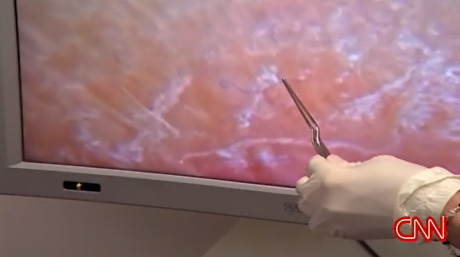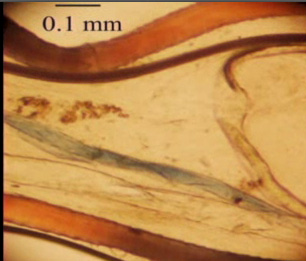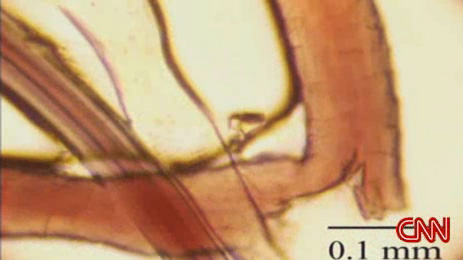Oh dear, it looks like Fox News took my script, and had a hollywood screenwriter make it more interesting:
“Mysterious Condition Finally Acknowledged!”, they say, which is a total misunderstanding. I’ll repeat what I said earlier:
The CDC is investigating why there seems to be an increase in the number of people reporting symptoms that look like DOP. Maybe there is an actual increase in cases due to some environmental cause (like pollution or fiberglass) or infectious agent (like MRSA), or it’s just a demographic shift with baby boomers hitting menopause, or maybe it’s an illusory increase, focussed by the media’s coverage of Morgellons, or maybe it’s magnified by the internet’s villagification of the world. Maybe a combination.
If you are new here, and really want to know what the medical community feels about Morgellons, read this link:
http://morgellonswatch.com/2006/09/22/doctors-patients/
Or this one, if you really want to get into details:
http://morgellonswatch.com/2006/10/29/morgellons-and-dermatologists/
Finally, I don’t want to pick on the people in the video, they are suffering enough. But really Fox, what was with that close up of the woman picking at her lip. The “white specks” which she claimed were emerging fibers looked just like dry skin peeling off her lip.
This is unprofessional scaremongering, which is HURTING PEOPLE. Fox should be ashamed. I only hope that the recent OJ reversal might prompt them to have a degree more oversight in the future.
[Addendum: Nov 23 2006]
I watched the video again, and one thing that grated was Professor Wymore again relating the story of how someone suggested that fibers might be getting under the skin by people injecting their skin with fibers in a saline solution mixed in a syringe. The way he says it suggests that’s the only explanation that has been offered by doctors.
Are thousands of people injecting themselves with fibers? Of course not! That is just ridiculous, and nobody is suggesting otherwise. And for anyone reading who thinks they have Morgellons, I’m not suggesting you did it either.
But might a few people be doing something like this? Is Wymore’s total rejection of this theory justified? It actually turns out that there are many well documented cases of people injecting themselves with things in order to get medical attention. People even inject their children with things, things much worse than fibers.
I’m not suggesting that Morgellons is caused by people injecting themselves with fibers! I’m just disappointed in Professor Wymore’s portrayal of a false dicotomy – for him it’s either a bizzare mind blowing disease new to science, or people are injecting fibers under their skin. Wymore takes the former, since he’s staked his reputation on it being true. Occam, if pressed, would take the latter, since it’s something known to happen. It explains a few cases, but don’t forget hot tubs, and menopause.
References:
http://www.local6.com/news/2770688/detail.html
Mom Accused Of Injecting Human Waste Into Daughter
Test Results Show IV Fluid Contained Substance Consistent With Fecal Matter
http://www.wboc.com/global/story.asp?s=3600148&ClientType=Printable
Mother Charged with Injecting Fecal matter into Toddler Son
McMullen is a former nurse at A.I. duPont Hospital for Children. She is accused of deliberately injecting fecal matter into her son, causing the toddler to be hospitalized numerous times.
http://www.postgradmed.com/issues/1999/12_99/kiester.htm
Occasionally, patients with Munchausen’s syndrome inject their knees to produce swelling, ingest agents to distort their laboratory findings, rub irritants on their skin to produce rashes, or wear splints or braces unnecessarily.
http://www.ncbi.nlm.nih.gov/entrez/query.fcgi?cmd=Retrieve&db=PubMed&list_uids=7802561&dopt=Abstract
A woman presented to our emergency center after self-injection of human chorionic gonadotropin in an attempt to gain admission to the hospital.
http://www.ncbi.nlm.nih.gov/entrez/query.fcgi?cmd=Retrieve&db=PubMed&list_uids=2102200&dopt=Abstract
The patient presented with bleeding from various sites; repeated subcutaneous emphysema of the face, orbit and upper chest; ulcers on the tongue, and dermatitis autogenica. The illness was confirmed to be factitious and self-induced when she was caught red-handed trying to inject air.
http://www.ncbi.nlm.nih.gov/entrez/query.fcgi?cmd=Retrieve&db=PubMed&list_uids=11903666&dopt=Abstract
We report herein a male patient displaying factitious disease of the breast due to injection of a high viscosity liquid plastic material. RESULTS: Establishment of the proper diagnosis was greatly delayed due to a lack of suspicion of this entity. Only direct confrontation of the patient with the biopsy results (lipogranulomatosis) led to a reluctant and then only partial admission of the self-induced nature of this patient’s illness.




